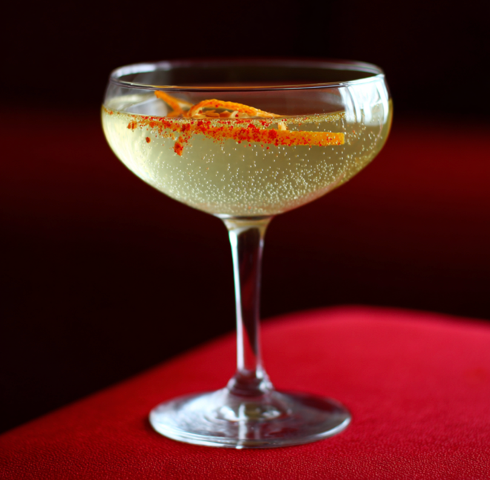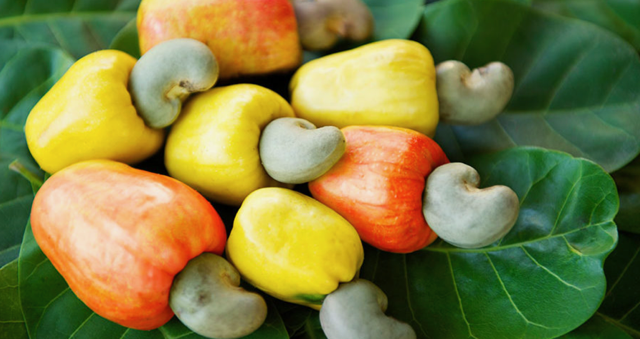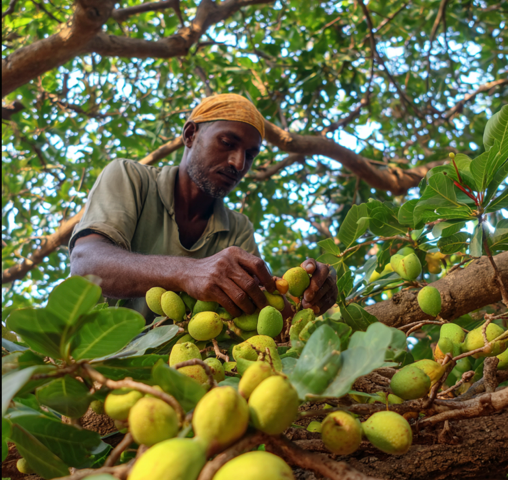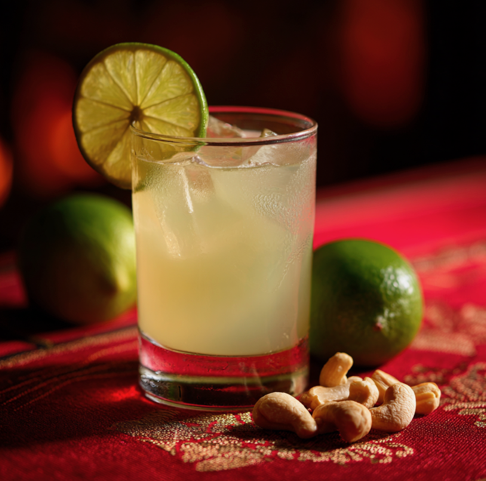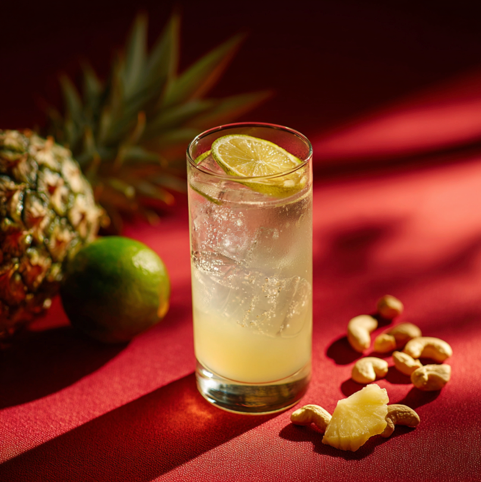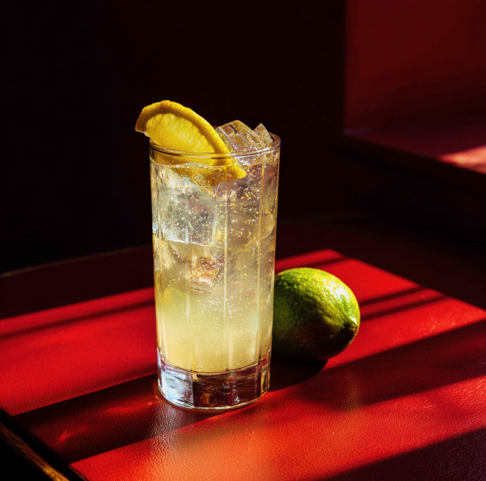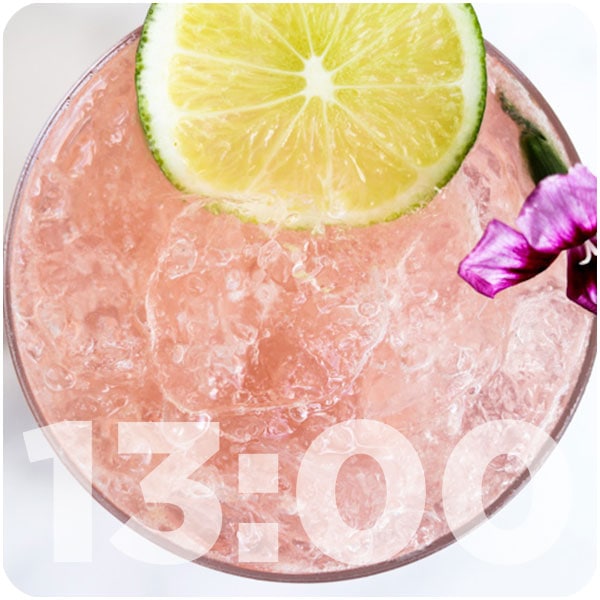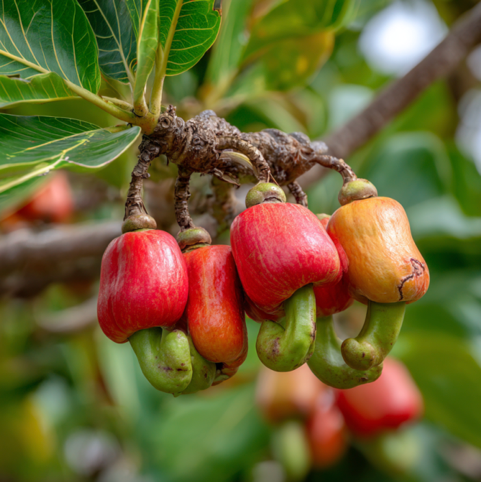
Feni, A Heritage Spirit with Deep Roots
Feni is more than just a drink—it’s a living, breathing expression of Goa. Officially granted Geographical Indication (GI) status in 2009, it belongs to the same family of storied spirits as Champagne and mezcal.
Its history goes back to the 1500s, when Portuguese colonizers brought cashew trees to the region. Today, Goa remains the only place in the world that transforms the cashew apple into liquor using methods that are both traditional and labor-intensive.
The journey begins with the ripe fruits falling naturally from the trees during warm Goan afternoons. Harvesters collect them with a long, pointed stick called a kantor and carry them to a stone platform, where they’re stomped by foot—a practice both festive and functional. The cloudy juice that emerges is rich in tannins and flavor, yet too harsh to drink straight away. It’s collected, slowly pressed under stone weights, and then fermented in matheche bhann—clay pots made of iron-rich earth and buried halfway in the ground.
Distillation is a rustic art. The fermented juice is heated in a wood-fired oven (forno), and its vapors pass through a copper coil into a water-cooled condensation tank. The first distillation produces urrak, a fruity, low-alcohol spirit; the second gives us feni, the potent and complex liquor prized for its bold aroma and layered flavor.
“Feni is unapologetic and honest—the perfect representation of the land it comes from,” says Pankaj Balachandran, founder of Countertop India. Hansel Vaz, founder of craft distillery Fazenda Cazulo, adds: “It ranges from the exotic notes of cashew fruit to the depth of native botanicals like dukhshiri and kokum.”
From Backcountry Booze to Modern Mixology
Once dismissed as a coarse, countryside hooch, feni is now enjoying a renaissance. Younger drinkers, bartenders, and sustainability-minded producers are embracing it, not only as a heritage product but as a contemporary cocktail base with terroir-driven appeal.
At Hideaway Café in Goa, bar owner Sheldon Abranches hosts the “Big Fat Uraak Party,” celebrating the first seasonal distill. At The Lab at Amaaranth, Balachandran creates ingredient-forward cocktails with hyper-local sourcing—over 80% of the bar’s ingredients are sourced within five kilometers. “It’s not just about the drink,” he says. “It’s about connecting people to the land and process.”
Meanwhile, Hansel Vaz is bridging the gap between old and new with immersive tasting tours like the Floating Feni Experience. Offered at Fazenda Cazulo and bookable via the Urbanaut app, this experience is a deep dive into the world of feni—starting from the forested cashew orchards and ending in a pondside tasting with your feet in the water and fish nibbling at your toes.
How to Drink Feni Like a Pro
At Fazenda Cazulo, guests begin with urrak flavored with butterfly pea flower, then tour the fields lined with Vengurla and Bali cashew trees. They stomp fruit, peer into fermentation pots that have been in use for nearly a century, and explore the distillation shed with its blazing forno.
The highlight is the tasting itself. Feni is served neat—both cashew and coconut variants—alongside delicacies like Goan sweets (doce, pinagr), tropical fruits, and even bee pollen. Guests are encouraged to mix and match, swirling feni with ingredients like chili, lime, or even prawn fritters, allowing each combination to reveal a different dimension of the spirit.
Aaron, a Cazulo team member, guides each tasting, helping visitors understand not only how feni is made, but how to enjoy it. “Non-Goans often badmouth feni because they’ve only tried the industrial versions,” he says. “But artisanal feni is something else entirely.”
A Global Journey Begins
Feni’s reputation is now crossing oceans. At Bar Benfiddich in Tokyo, Hiroyasu Kayama is experimenting with feni in his signature cocktails. In Singapore’s Jungle Ballroom, it’s the star of “The Goa,” a tropical sour blending feni with mango and passionfruit. In Paris and Milan, it has graced the menus of Little Red Door, Danico, and Moebius, proving its range and elegance in high-end mixology.
Still, education remains key. “What Cazulo and others are doing is critical to demystifying the category,” says Priyanka Blah, Academy Chair for The World’s 50 Best Bars in South Asia. “People need to understand the spirit’s connection to land, culture, and community.”
The Future of Feni
As interest grows, there’s a quiet movement brewing—rooted in integrity, sustainability, and pride. Feni’s resurgence is not about mass production, but mindful appreciation. Balachandran puts it best: “We’re building something soulful and intentional. In five years, I want people to think of Goa not just for sunsets—but as the terroir of India’s most profound spirit.”
From underground clay pots to the world’s top bars, feni is rewriting its narrative. And as more people dip their feet—literally and figuratively—into this unique Goan tradition, one thing is clear: feni is no longer a secret. It’s a story finally being told.
Feni Lime Refresher
Ingredients:
- 2 oz Feni
- 0.25 oz Fresh Lime Juice
- 3 oz Lemon-Lime Soda
- 0.75 oz Soda Water
- 1 pinch Salt
Optional garnish: Lime wheel or mint sprig
Instructions:
- In a highball glass filled with ice, pour the feni and lime juice.
- Add a pinch of salt — this enhances the citrus and tones down bitterness.
- Top with lemon-lime soda and soda water.
- Stir gently to combine.
- Garnish with a lime wheel or mint, if desired.
Flavor Profile:
- Bright and citrusy
- Lightly carbonated
- Salty-sour notes to balance feni’s funk
Spicy Feni Smash
Ingredients:
- 2 oz Feni
- 0.5 oz Fresh Lime Juice
- 2–3 slices fresh green chili (bird’s eye or serrano)
- 3 oz Lemon-lime soda
- 0.75 oz Soda water
- 1 pinch Salt
Instructions:
- Muddle chili slices and lime juice in a shaker (adjust spice level to taste).
- Add feni, shake lightly with ice.
- Strain into a glass with ice.
- Top with lemon-lime soda and soda water.
- Stir gently and garnish with a chili slice or lime peel.
Profile: Fiery, citrusy, with a clean burn and a salty finish.
Tropical Feni Cooler
Ingredients:
- 2 oz Feni
- 1 oz Pineapple Juice
- 0.25 oz Lime Juice
- 2 oz Lemon-lime soda
- 1 oz Soda water
- 1 pinch Salt
Optional: A few mint leaves
Instructions:
- Combine feni, lime juice, and pineapple juice in a shaker with ice.
- Shake and strain into a tall glass with fresh ice.
- Add lemon-lime soda and soda water.
- Stir and garnish with pineapple wedge or mint sprig.
Profile: Bright, juicy, beachy — ideal for a sunny day.
Dry & Zesty Feni Sour Highball
Ingredients:
- 2 oz Feni
- 0.75 oz Lime Juice
- 1 dash Angostura bitters (optional but adds depth)
- 2 oz Soda water
- 1 oz Lemon-lime soda (optional, for a touch of sweetness)
- 1 pinch Salt
Instructions:
- Shake feni, lime juice, and bitters with ice.
- Strain into a highball glass with ice.
- Top with soda water and a splash of lemon-lime soda (or skip it for full dryness).
- Stir and garnish with a lemon twist.
Clean, tart, slightly bitter — a grown-up aperitif.
Don’t drink and drive. Enjoy responsibly.
News
Stay tuned and discover all the news in the Spirits World for professionals and amateurs, by our Spirits Hunters’ experts.
See all posts in this category. Join the community on Reddit
Join the community on Reddit
Spirits Hunters is a community dedicated to spirits and the world of mixology. Feel free to talk about the world of mixology and bartending here!
Join


